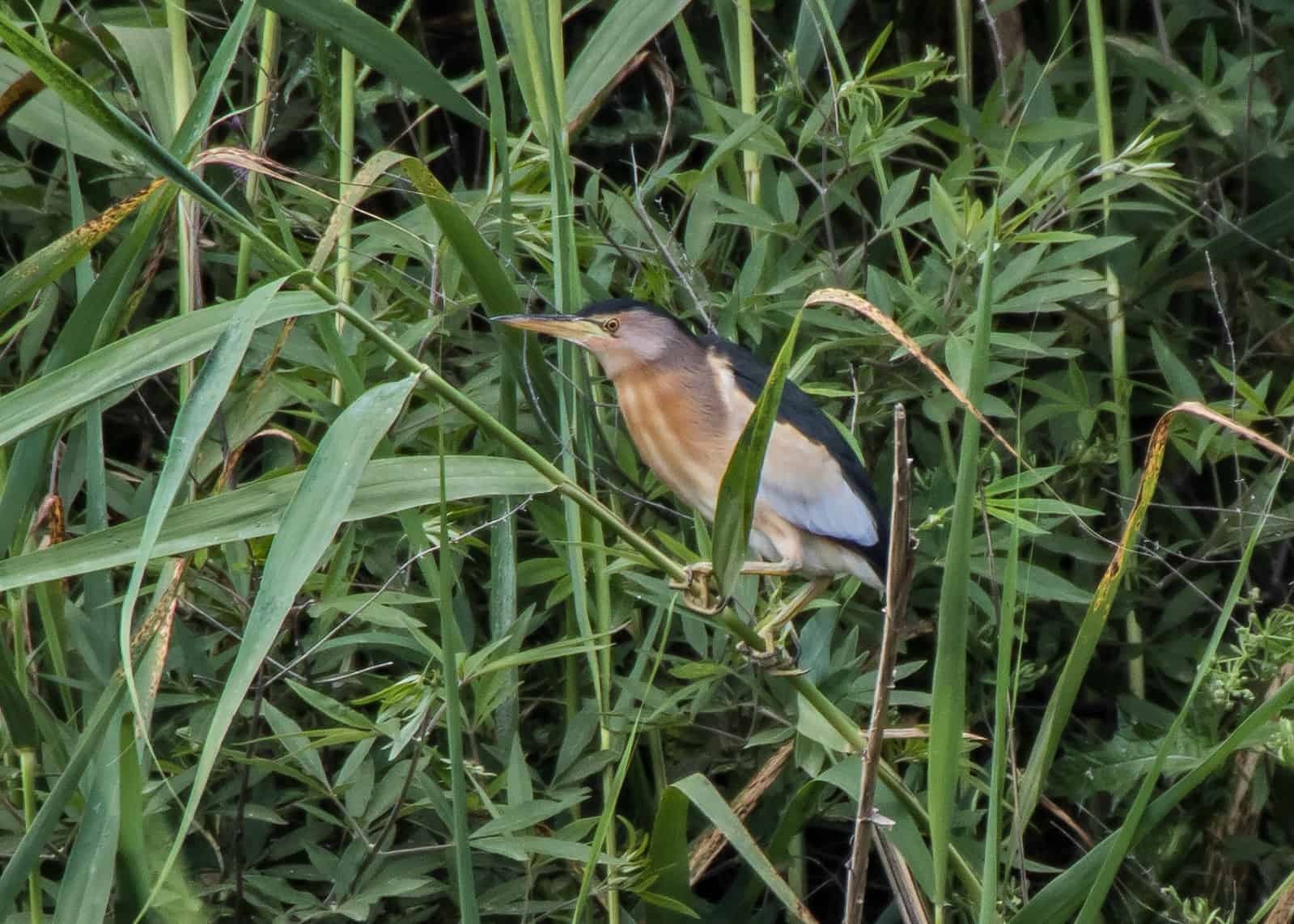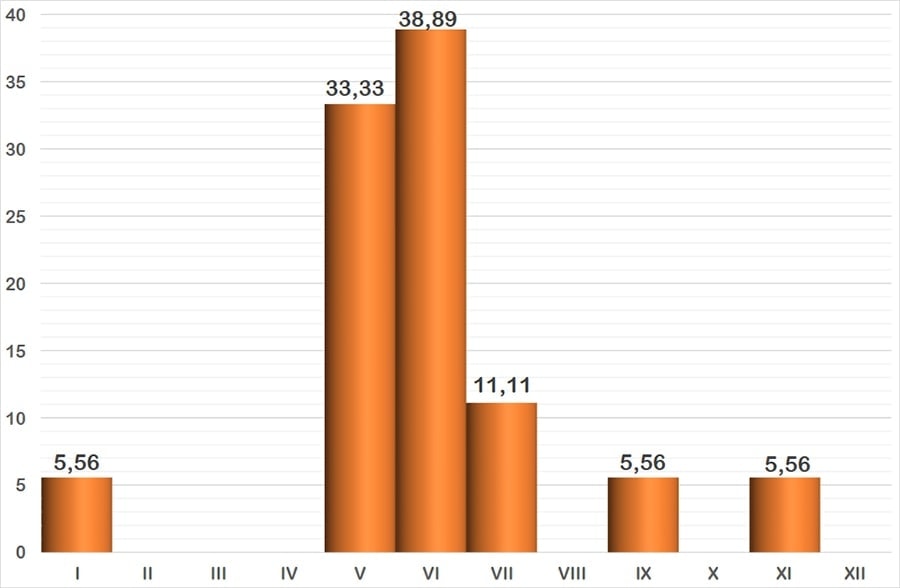It is a small heron, roughly about the size of a pigeon. The back, top of the head and wing tips are black, contrasting with the rest of the plumage, which during the mating season in the male is creamy with some pinkish tones for the underparts and neck, and greyish cheeks. The latter tone being predominant in the female, although browner and the back is darker brown.

La imagen es autoría de Michael Sveikutis.
Licencia Creative Commons con algunos derechos reservados.
Species 1
Little Bittern
Scientific name
Family 2
Taxonomic Affinity Group 3
Phenology 4
It is clearly present in the summer, as for the rest of the Iberian Peninsula, and the wetlands of Roquetas de Mar are one of its breeding grounds. Although it is most likely to be seen from May to July, during the postnuptial migratory passage and wintering, it is possible to spot it during this period, although it goes virtually unnoticed since it only leaves the reedbed in which it lives to feed on the edge, or in case of danger.

The graph represents the probability of seeing a species during the year, grouped into months. The vertical axis indicates the percentage value. Each of the bars expresses its value. The horizontal axis represents the months: I = January, II = February, III = March, IV = April, V = May, VI = June, VII = July, VIII = August, IX = September, X = October, XI = November and XII = December.
Observation recommendations
Catalogued in Andalusia as vulnerable, it is a bird that is exceedingly difficult to spot due to its habits, the best times to see it are in the morning and in the afternoon.
Observation areas where we can find it
Notes
[1] The names used are from the list of birds of Spain, drawn up by SEO/BirdLife and updated to 2019 (https://seo.org/listaavesdeespana/). The reference is: Rouco, M., Copete, J. L., De Juana, E., Gil-Velasco, M., Lorenzo, J. A., Martín, M., Milá, B., Molina, B. & Santos, D. M. 2019. Checklist of the birds of Spain. 2019 edition. SEO/BirdLife. Madrid.
[2] The taxonomic family to which it belongs is indicated.
[3] Traditionally, waterbirds have been grouped according to their taxonomy or “taxonomic affinity”, i.e., when some birds coincide in certain features that allow them to be classified scientifically, but without leaving the rigour of science, they are put together in these groups so that they can be easily recognised. These groups are the following: Greves (belonging to the Podicipedae family), Herons and Similar (includes the families: Ardeidae -Herons- Ciconiidae -Storks- and Threskiornithidae -Ibises and spoonbills-), Ducks (the whole Anatidae family), Coots and Similar (the family Rallidae corresponding to Rails, Gallinules and Coots), Cranes (also with only one family, the Gruidae), Waders , a heterogeneous group, the most diverse of this classification, includes the families Burhinidae (Stone-curlews), Haematopodidae (Oystercather), Recurvirostridade (Avocets and Stilts), Glareolidae (Pranticole), Charadriidadea (Plovers), Scolapacidae and finally Gulls and Similar (the recently unified family Laridae, i.e. Gulls and Terns).
[4] Phenology studies the relationship between the cycles of living beings and meteorological factors, and in our latitude these factors manifest themselves as variations throughout the year, thus relating the seasons to the birds’ cycles (breeding, migratory journeys, etc.) The graph shows the probability of seeing a bird depending on the month. It uses data from 48 bird censuses carried out between October 2016 and September 2018. The method used is that of a census route with sampling stations, with a total count on the sheet of water.
